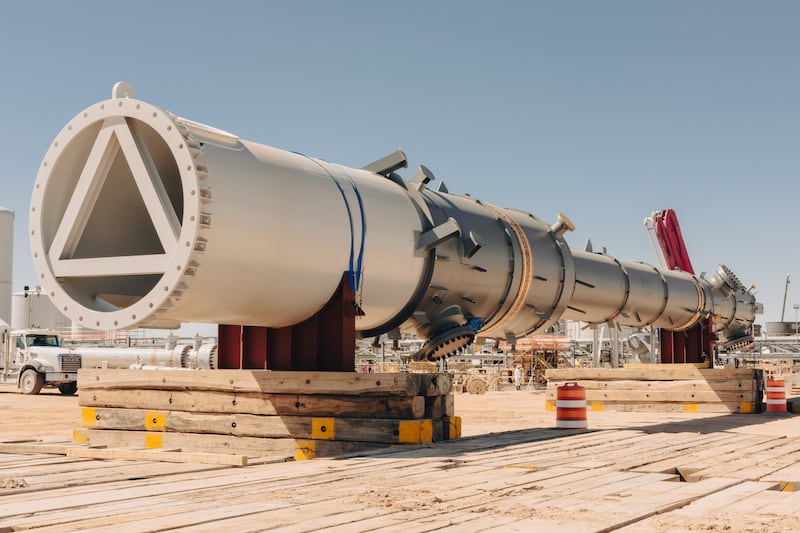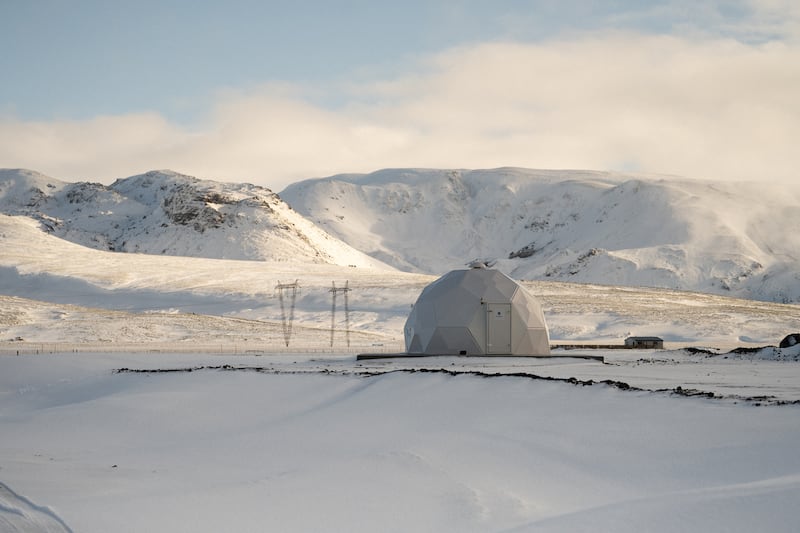A technological revolution is ramping up, attempting to remove vast amounts of carbon dioxide from ambient air, and then lock the greenhouse gas away in an effort to reduce its heat-trapping effects and break the cycle of global warming. It comes in multiple guises and is as ambitious as it is controversial.
It is dividing climate scientists and policymakers. One camp says it is distracting from timely implementation of known solutions to climate change, when technologies – such as direct air capture and carbon capture and storage (CCS) – are immensely costly and unproven at scale. They absorb CO₂ from the air and then release a stream of the concentrated gas that can either be buried in the ground, or sold as a useful product such as synthetic jet fuel – essentially, recycling CO₂.
In the other camp are those who say the climate crisis requires bigger technological plays – such is the extent of failure to contain temperature rise arising from burning fossil fuels pushing towards dangerous tipping points. Some in this techno-fix brigade even support risky forms of “geoengineering” including scrambling weather – such as modifying solar radiation or brightening clouds – in an attempt to stabilise the planet.
It could be transformative in containing global temperatures and saving civilisation. Getting it wrong could exacerbate any degree of climate control and predictability we retain at present.
READ MORE
The UN Intergovernmental Panel on Climate Change... concluded last year, after exhaustive evaluation, that CCS [carbon capture and storage] is technologically feasible and could play a significant role over the coming century
The issue is forcing its way on to agendas at climate Cop negotiations hosted by the UN, with blatant pushing of CCS by petrostates. Two factors are ensuring CO2-removal technologies are going mainstream. The UN Intergovernmental Panel on Climate Change (arguably the most authoritative specialists) concluded last year, after exhaustive evaluation, that CCS is technologically feasible and could play a significant role over the coming century. Secondly, big business is facing up to its sustainability obligations in drastically reducing its carbon footprint, and purchasing credits – investing in forest preservation, renewable energy projects or carbon sequestration – to get there as quickly as possible.
[ Keeping tabs on emissions as carbon capture moves centre stageOpens in new window ]
Two projects reflect the ambition; Carbfix’s Mammoth project in Iceland and Occidental Petroleum’s Stratos project in Texas – the latter also raises concerns that this course means Big Oil, the biggest source of carbon pollution, will persist with its activities.

Carbfix has developed a way of capturing and storing CO₂ in water, and injecting it into basalt formations up to a mile below ground through an elaborate system of pipes. This forms stable carbonate minerals, capturing the gas in the igneous rock. The world’s largest carbon storage facility is powered by geothermal energy and due to be fully operational in May with a promise of storing 36,000 metric tonnes of CO₂ per year.
Its partner, the Swiss company Climeworks, has secured $650 million from investment firms, the largest private commitment for the burgeoning industry. Its customers include Microsoft (and former Microsoft chief executive Bill Gates), JP Morgan Chase and Irish-American payment systems firm Stripe – all eager to purchase verified “offsets”, enabling them to claim they are operating on a carbon-neutral or even carbon-negative basis.
[ Carbon capture is not a climate change panaceaOpens in new window ]
Occidental intends using some CO₂ to enhance oil extraction in difficult-to-access underground areas. Its plant, powered by solar radiation, will be 10 times more powerful than Mammoth and sequester 500,000 tonnes of CO₂ per year. It plans to build 100 facilities, each capable of capturing one million tonnes of CO₂ per year, in a financial partnership with asset manager BlackRock. That includes direct air capture plants built with Adnoc, UAE’s state oil company.

Meanwhile a plethora of technology start-ups are exploring options including use of chemical “scrubbers” to biochar manufacture from burning wood waste in absence of oxygen, which can be used as fertiliser.
Minister for Climate and Energy Eamon Ryan caused surprise when he accepted the case for deploying CCS ‘in the hard-to-reach sectors, like cement plants and incinerators’
Climate scientists, such as lead IPCC author Friederike Otto of Imperial College London, are concerned that the impression that there are viable options for CO₂ removal will engender a false sense of security and become “an excuse for dithering and further delay”, when the world is capable of containing temperature rise to within 1.5 degrees if knowledge and tools to do it are backed by urgency and political will.
[ Tenth consecutive month of heat record alarms and confounds climate scientistsOpens in new window ]
Former UK chief scientific officer Sir David King has been a consistent advocate for more radical steps because of failure to act before now and immediately required cuts in greenhouse gases are unlikely to happen. That may mean having to refreeze ice caps in polar regions – ie repairing the climate, he believes – because overshoot of 1.5 degrees is almost certain.
Minister for Climate and Energy Eamon Ryan caused surprise when he accepted the case for deploying CCS “in the hard-to-reach sectors, like cement plants and incinerators, where you can scrub the carbon from the chimney and store it geologically”.
Under the Government’s 2024 climate plan, a “carbon capture and removals working group” is being established to chart the way forward. Under the 2019 climate plan, the Department of the Environment, Climate and Communications examined the feasibility of CCS with semi-State utility Ervia, parent company of Gas Networks Ireland, assessing technical options. It confirmed Kinsale Head gas field has “attractive potential as a carbon dioxide store”.
Emissions and temperature trends suggest it won’t be enough to merely avoid putting more heat-trapping greenhouse gases into the air. We will need to actively remove CO₂ to avoid the worst effects of global warming.
“There are plenty of ways to do that, including planting trees or restoring seagrass beds. But if you want to mop up CO₂ in an easy-to-quantify way with few uncertainties, then direct air capture is a solid – if expensive – option,” a New Scientist team concluded last month in an assessment of five climate megaprojects that might save the world.
Just as every scalable scientifically proven option is needed to cut emissions, where we are now in the unfolding climate crisis means innovative ways and human ingenuity will have to play their part too in putting carbon back where we found it; in the earth before it was extracted and burned relentlessly in pursuit of progress. Carbon removal technologies will be critical to absolving environmental sins of our past.
- Listen to our Inside Politics Podcast for the latest analysis and chat
- Sign up for push alerts and have the best news, analysis and comment delivered directly to your phone
- Find The Irish Times on WhatsApp and stay up to date














